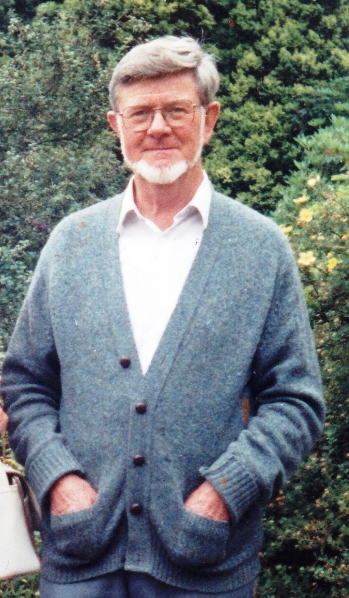Pioneer in the stratigraphic use of planktic foraminifera and major contributor to the geology of Trinidad.
 John Saunders was born on 3 November 1928. He attended the Tiffin School in Kingston-upon - Thames and read geology at University College London, graduating with honours in 1951.
John Saunders was born on 3 November 1928. He attended the Tiffin School in Kingston-upon - Thames and read geology at University College London, graduating with honours in 1951.
In the same year he took up an appointment with Trinidad Leaseholds Limited as a field geologist. In 1952 he was transferred to the geological laboratory in Pointe-a-Pierre. This proved an important career move as it brought him into contact with Hans Kugler, ’Father of Trinidad Geology’ and who was instrumental in encouraging the use of planktic foraminifera for stratigraphic control. These studies were spearheaded by Hans Bolli and Walter Blow. Saunders was an enthusiastic addition to this team. These pioneering studies were among the earliest demonstration of the value of planktic foraminifera for stratigraphic correlation and later confirmed in other parts of the world. In 1959 John was promoted to Senior Stratigrapher.
Saunder’s contribution to the geology of Trinidad over almost 25 years, was finally acknowledged by including his name in the Government’s Roll of Honour, which recognises those who have made an exceptional contribution to Trinidadian life and called ‘CARIBBEAN ICONS’. John was a worthy recipient.
Trinidad
As a consequence of the Suez Crisis, Texaco acquired Trinidad Leaseholds in 1956 and John spent the remainder of his working career with Texaco, retiring as Chief Stratigrapher in 1975. His responsibilities while initially confined to Trinidad later were extended to Texaco’s exploration activities in Latin America. During this period he began a revision of the Kugler map, which was finally published in 1997.in 1975 he spent time as the co-chief scientist on Leg 15 of the Glomar Challenger deep sea drilling project.
Other ‘extracurricular’ activities included producing a stratigraphic lexicon for Trinidad and Tobago, he co-coordinated the work of the Ministry of Energy who were ultimately responsible for publishing the revised geological map of the island. He was an honorary member of the Trinidad & Tobago Geological Society. In 1966 Saunders led excursions for the Canadian research vessel ‘Hudson’ on their visit to Trinidad and Barbados. He gave generously of his time to other things, including lecturing to university engineers. He was technical secretary for the 4th Caribbean Geological Conference, and chaired the local branch of the Institute of Petroleum. .
He took a keen interest in the Trinidad Field Naturalists’ Club and was a Field Warden, and lectured to schools on their behalf. A keen ornithologist and a skilled pilot he was able to contribute material for ffrench’s book Birds of Trinidad & Tobago and to photograph the island’s mud volcanoes.
Basel
Saunders retired in 1975, and accepted a position as curator of the micropalaeo collections in the Natural History Museum in Basel. This brought him, once again, in contact with his old mentor and colleague Hans Bolli, who was attached to the Federal School of Technology in Zurich. Here he co-curated the museum’s micropalaeo reference collections. He led a government funded expedition to the Dominican Republic between 1978 and 1980. A major contribution whilst in Basel, was to co-edit with Bolli and Perch-Nielson the 2 volume book on Cretaceous- Tertiary planktonic foraminifera and also to co-author (with Bolli) the chapters on Oligocene – Holocene planktonics.
A lifelong bachelor, John finally retired, leaving Basel in 1994 and moving to Wensleydale in Yorkshire to enjoy a well-earned retirement. John died 5 January 2017.
By Griff Cordey, with acknowledgement for material from Sally Radford and James Robson